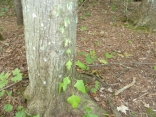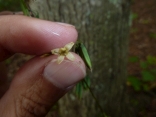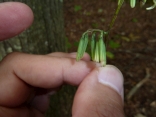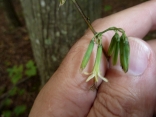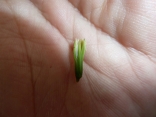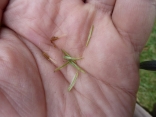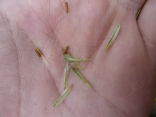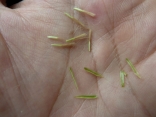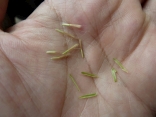|
August 25, 2011
|
Southeastern, New Hampshire
|
It is very difficult for me to tell the difference between Tall Rattlesnakeroot
(Prenanthes altissima) (this plant) and Gall of the Earth (Prenanthes
trifoliolata). The way that some tell the difference is to count the number of
primary bracts outside of the flower. If there are only five (5) primary
bracts, then it is Tall Rattlesnakeroot (Prenanthes altissima). Gall of the
Earth (Prenanthes trifoliolata) will have eight (8) or more primary bracts.
But here is the problem, what the %@!*!*@*(! is a primary bract?! There are very short
bracts at the base of the flower, but there are also bracts that run along the whole
length of the flower. In addition, some of these bracts overlap and some appear to
be partially or mostly beneath the other bracts. So I do not know how to tell exactly
which are primary bracts.
The book,
Manual of Vascular Plants of Northeastern United States and Adjacent Canada calls
these bracts, principal bracts and states that Gall of the Earth (Prenanthes
trifoliolata) will have 7-9 (usually 8) bracts and Tall Rattlesnakeroot
(Prenanthes altissima) will have 4-6 (usually 5) bracts. In addition, Gall of the
Earth will average 9-13 flowers in a loose panicle clusters while Tall Rattlesnakeroot
will have 5-6 flowers in a cluster (usually having some axillary clusters).
|

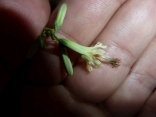
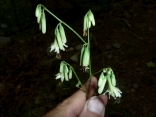
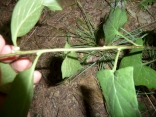
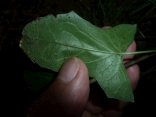

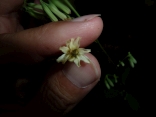
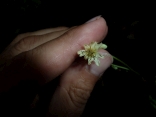
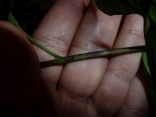
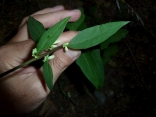
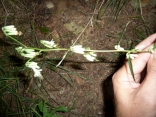

|












